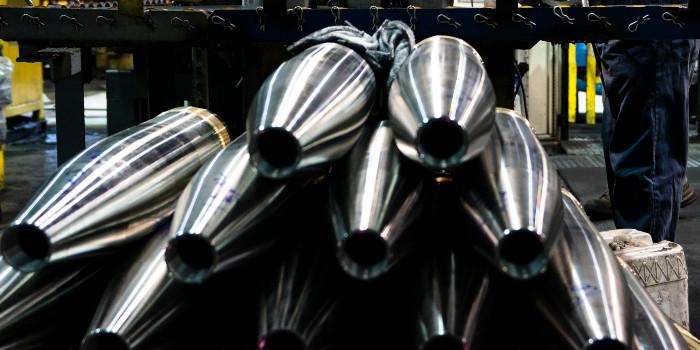(Headline USA) One of the most important munitions produced by America comes from a historic factory in Scranton, Pennsylvania, built by coal barons, where tons of steel rods are brought in by train to be forged into artillery shells that the U.S. can’t produce fast enough.
The Scranton Army Ammunition Plant is at the vanguard of a multibillion-dollar Pentagon plan to modernize and accelerate its production of ammunition and equipment to be ready for a potential conflict.
But it is one of just two sites in the U.S. that make the steel bodies for the critical 155 mm howitzer rounds that the U.S. is rushing to Ukraine to help in its grinding fight to repel the Russian invasion in the largest-scale war in Europe since World War II.
The invasion of Ukraine revealed that the U.S. stockpile of 155 mm shells and those of European allies were unprepared to support a major and ongoing conventional land war, sending them scrambling to bolster production.
The dwindling supply has alarmed U.S. military planners, and the Army now plans to spend billions on munitions plants around the country in what it calls its most significant transformation in 40 years.
It may not be easy to adapt: practically every square foot of the Scranton plant’s red brick factory buildings — first constructed more than a century ago as a locomotive repair depot — is in use as the Army clears space, expands production to private factories and assembles new supply chains.
So far, the U.S. has provided more than $35 billion in weapons and equipment to Ukraine.
The 155 mm shells are used in howitzer systems which allow soldiers to hit targets up to 20 miles away with a highly explosive munition.
The Army is spending about $1.5 billion to ramp up production of 155 mm rounds from 14,000 a month before Russia invaded Ukraine to over 85,000 a month by 2028, U.S. Army Undersecretary Gabe Camarillo told a symposium last month.
But even with higher near-term production rates, the U.S. cannot replenish its stockpile or catch up to the usage pace in Ukraine, where officials estimate that the Ukrainian military is firing 6,000 to 8,000 shells per day. In other words, two days’ worth of shells fired by Ukraine equates to the United States’ monthly pre-war production figure.
Currently, the metal bodies for the 155 mm shells are made at the Army’s Scranton plant, operated by General Dynamics, and at a General Dynamics-owned plant in nearby Wilkes-Barre, officials say.
Together, the plants are under contract for 24,000 shells per month, with an additional $217 million Army task order to further boost production, although officials won’t say how many more 155 mm shells are sought by the task order.
The Russians are firing 40,000 shells per day, said Ustinova, who serves on Ukraine’s wartime oversight committee.
“So we’re doing five times less than they do and trying to keep it up. But if we don’t start the production lines, if you don’t warm it up, it is going to be a huge problem,” Ustinova said.
The obstacles the U.S. faces in ramping up production can be seen at the Scranton plant.
The factory, which was built for the Delaware, Lackawanna and Western Railroad just after 1900, when the city was a rising coal and railroad powerhouse, has produced large-caliber ammunition for the military going back to the Korean War.
But the buildings are on the National Historic Registry of Historic Places, limiting how the Army can alter the structures.
Inside, the floor is crowded with piles of shells, defunct equipment and production lines where robotic arms, saws, presses and other machines cut, heat, forge, temper, pressure test, wash and paint the shells.
The plant is in the midst of $120 million in modernization plans and the Army hopes to open a new production line there by 2025.
Still, clearing space for it has been a complicated task while the military adds newer machinery to make existing lines more efficient.
“There’s a lot going on,” said Richard Hansen, the Army commander’s representative at the plant.
Meanwhile, the Army is expanding supply chains for parts — metal shells, explosive fill, charges that shoot the shell and fuses — and buying the massive machines that do the work.
The Army has new contracts with plants in Texas and Canada to make 155 mm shells, said Douglas Bush, an assistant Army secretary and its chief weapons buyer. The U.S. is also looking overseas to allies to expand production, Bush said.
Adapted from reporting by the Associated Press

